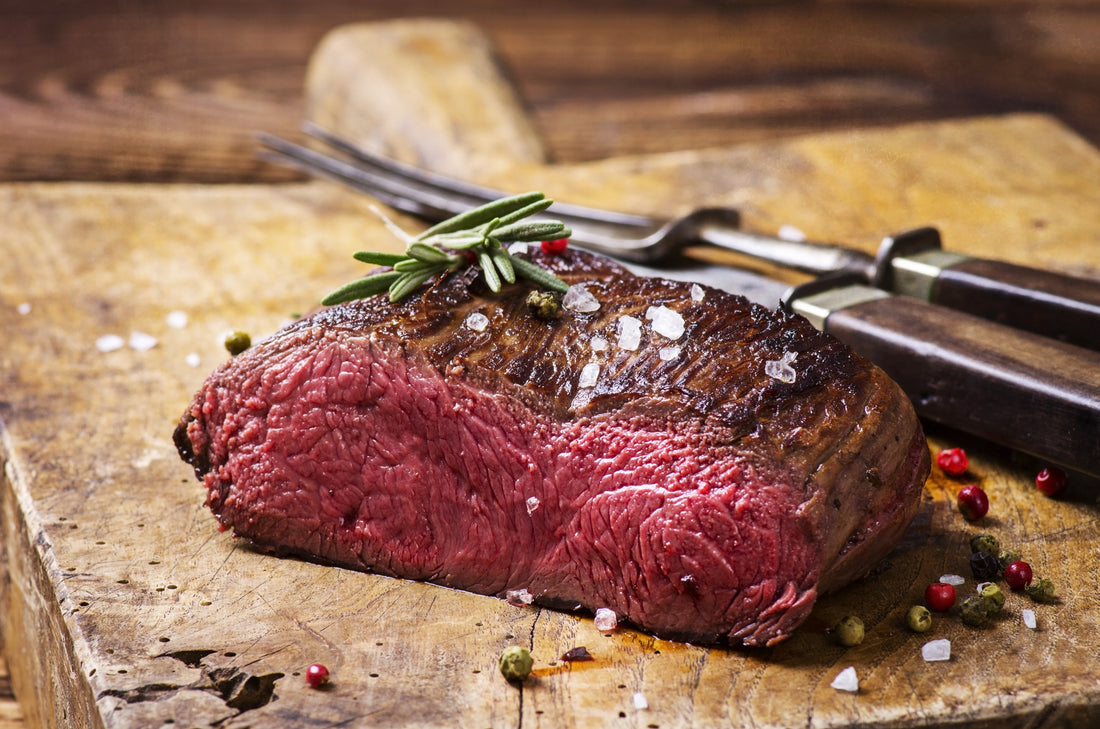Venison can refer to the meat of any game animal, including antelope, caribou, or elk. But most often, venison refers to deer meat. You can certainly try the following cooking methods for any type of venison, but we recommend them with deer venison in mind. That said, let’s get cooking!
What’s the Best Way to Cook Venison?
You should always strive to cook venison according to the type of cut you have. Choosing the cooking method by the cut of meat is a chef’s secret and one that every home cook should implement for optimal results.
With that in mind, we’ll be recommending three different ways to cook venison, with a note on which cut(s) do best for the associated cooking method.
Therefore, in this article, you’ll find information on:
- How to cook venison steak
- How to cook venison backstrap
- How to cook venison tenderloin
- How to cook ground venison products (burgers, sausages)
- How to cook venison shank
- ...And more
1. Grilled Venison
There’s nothing quite like grilled meat. Grilling is easy, less messy than cooking in the kitchen, and when done right, it produces a fantastic result.
But grilling is also a high-heat cooking method.
While this means it produces a great sear on the exterior of meats, it also means that grilling can produce a dry, overcooked, or tough dish if you attempt to cook the wrong cut of meat (or overcook it). This is especially true for venison, which is a naturally lean meat. So exercise caution when grilling venison; don’t treat it like beef.
- Cuts of Venison to Grill: More naturally tender cuts like venison tenderloin, backstrap (AKA loin), and sausages and burgers made from ground chuck from the neck, shoulder, rump, leg, and other parts of the deer); Ribs (if you apply low & slow heat first & finish off on the grill)
2. Braised/Roasted Venison
Braising is a time-tested cooking method that involves first dry searing meat, and then slowly cooking it at a low temperature with liquid to keep it moist and tender. If you have a slow cooker, you’ve likely braised foods before.
Braising is a perfect cooking method for most cuts of venison since its low fat content makes it prone to drying out or overcooking compared to richer meats like beef.
- Cuts of Venison to Braise: Shank, Neck, Ribs, Shoulder/Chuck, Rump, Leg/Round
3. Pan-Seared Venison
Some of the best venison recipes involve pan-searing in cast iron, carbon steel, or stainless steel. After all, if you were to walk into a high-end restaurant and eat steak, that steak will have likely been pan-seared (probably in carbon steel) and served with some kind of pan sauce.
Pan searing, like grilling, involves cooking at a high heat, so it’s essential not to overcook your meat with this method, which can be easy to do if you’re not careful.
- Cuts of Venison to Pan-Sear: Tenderloin, Backstrap / Loin steaks or chops, Leg steaks, Rump steaks, Burgers or sausage made with ground venison
How to Prepare Venison
How you prepare venison is just as important as how you cook it.
It’s important to properly field-dress, butcher, and tenderize venison. Don’t let your deer get too hot in the field; get it field-dressed and chilled as quickly as you can.
Well-prepared venison will have a more “gamey” flavor than beef or other types of meat, but you can minimize this flavor by removing residual hair during butchering, adding spices, or even better yet, marinating (which also tenderizes the meat).
Venison Cooking Tips
When it comes time to cook your Venison, FirstLight Farms recommends these Venison cooking tips, which we love:
- Don’t overcook it. Cook to an internal temperature of 135 degrees Fahrenheit.
- Bring meat to room temperature before cooking. Do not skip this step (if you do, the cold meat will “seize up”, becoming tough and rubbery when it comes into contact with heat from your preferred cooking method).
- Oil the meat, not the pan. This will lock in moisture. (Depending on the cooking method you may wish to add oil to the meat and the pan, but oiling the meat is certainly a good idea).
- Add salt to draw out moisture and promote browning (in fancy terms, this is called the “Maillard reaction”).
- Rest after cooking. This locks in juices.
Try These Three Venison Recipes Today
Learn More
Looking for more information and inspiration for cooking venison? Check out the Sausage Maker’s “Guide to Venison Cuts”.
Looking for an easier way to attract deer to you next season so you can stock your freezer and try out some new venison recipes? Try a Tectonic timed deer feeder!

